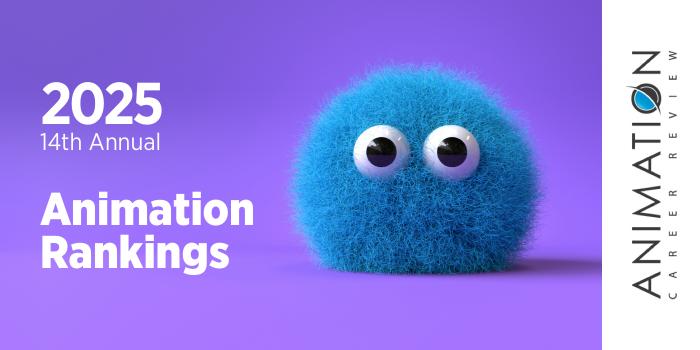Purdue University (Purdue) houses 10 academic colleges that provide degrees at all levels across all disciplines. Among the school’s 10 colleges is Purdue Polytechnic Institute.
Formally organized in 1964 as the School of Technology and known as Purdue Polytechnic, the institute serves more than 7,000 students at 11 locations across Indiana. With six academic departments, the Polytechnic is the college for Purdue’s Division of Military Science and Technology and its three ROTC (Reserve Officers’ Training Corps) programs on campus.
One of the six departments of Purdue Polytechnic is the Department of Computer Graphics Technology (CGT). Within the department are several paths to study animation. Options include a CGT BS with a major in Animation and Visual Effects (ANFX); the CGT MS; and a Five-Year CGT BS/MS. The CGT MS is part of Purdue’s Computational Interdisciplinary Graduate Program.
Visual Effects at Purdue is a STEM-based discipline, so CGT BS ANFX students will take courses in calculus, physics, and trigonometry. The program also focuses on 3D modeling, computer rendering, digital lighting, video, motion, texturing, character rigging, and audio. Throughout the program, students will have opportunities to create animated films, games, and other productions using industry software such as Autodesk and Maya. Students may also experiment with other types of animation software.
The CGT BS ANFX program requires 120 credit hours, including 39 major course credits, 15 credits of entertainment “selectives,” and 52 credits in other departmental requirements. The required 14 elective credits allow students to focus in different areas of animation, games, VFX, and more. Core course examples for the program include Visual Effects Introduction; Introduction to Computer Animation; Geometric Modeling for Visualization and Communication; Animation Foundations; Sketching for Visualization and Communication; Production for Computer Animation; and Computer Graphics Professional Practices II.
Graduates of Purdue Polytechnic’s CGT BS in Animation and Visual Effects are prepared to pursue positions in the animation and games industries, among others. Some graduates have gone on to work for studios such as Disney and DreamWorks, while others go on to teach, launch their own independent studios or freelance businesses, or apply to the CGT MS program.
The CGT MS at Purdue Polytechnic Institute serves close to 100 students. Primary focus areas include Computer Animation; Information Visualization; Games; and UX Design. This highly flexible, interdisciplinary program provides opportunities to create a customized a plan of study or take coursework across other Purdue graduate programs. Thesis and non-thesis options are available.
The Computer Animation focus for the CGT MS covers the entire digital animation process. The program also explores visual effects, games, and virtual reality. Course examples include Animation History, Technology and Technique; Visual Intelligence and Perception; Current Topics in 3D Animation; Seminar in Computer Graphics Technology; The Art and Technology of Computer Animation; and The Development of Graphics in Technology. Elective requirements allow students to explore other areas of interest.
The culminating experience for the non-thesis CGT MS program at Purdue University is the Animation Capstone (Production). The non-thesis CGT MS culminates with the Animation Thesis Research project. Graduates of the Purdue Polytechnic Institute CGT MS program are prepared to pursue leadership roles across industries. Examples include Animation Director, Lead Technical Artist, Game Developer, Art Director, Senior Simulation and Visualization Specialist, Lead Animator, and Technical Director.
CGT MS program alumni have been hired at companies and studios such as Google, Salesforce, DreamWorks, and Deloitte. Some CGT MS graduates go on to apply for admission to Purdue Polytechnic’s Technology PhD program.
Also housed in the Department of Computer Graphics Technology, the PhD supports study and research in computer animation, game studies, human-computer interaction (HCI), digital enterprise systems, user experience (UX) design, and data visualization. Graduates of the Technology PhD program at Purdue University go on to pursue teaching, research, management, and other leadership roles in industries such as film, technology, advertising, education, science, medicine, government, aviation, aerospace, engineering, information systems, and artificial intelligence (AI).
Purdue University is Indiana’s only land-grant university. Established in 1869, the school serves approximately 60,240 students, making it the second largest university in the state. Approximately 11% of all students at Purdue are enrolled at Purdue Polytechnic Institute. More than 400 programs are provided across 11 academic colleges and schools—including Purdue Polytechnic. The Higher Learning Commission (HLC) accredits Purdue University.







